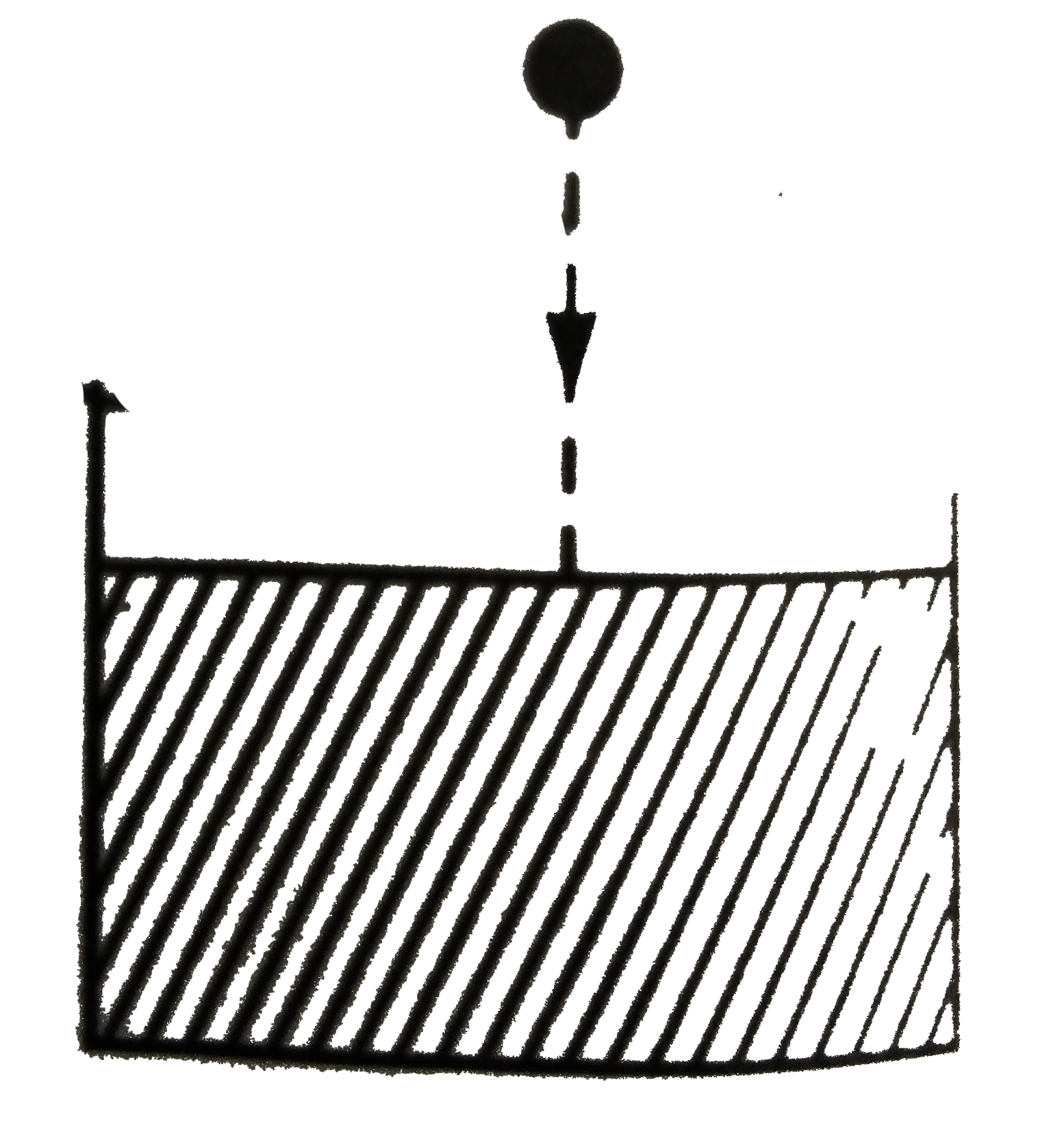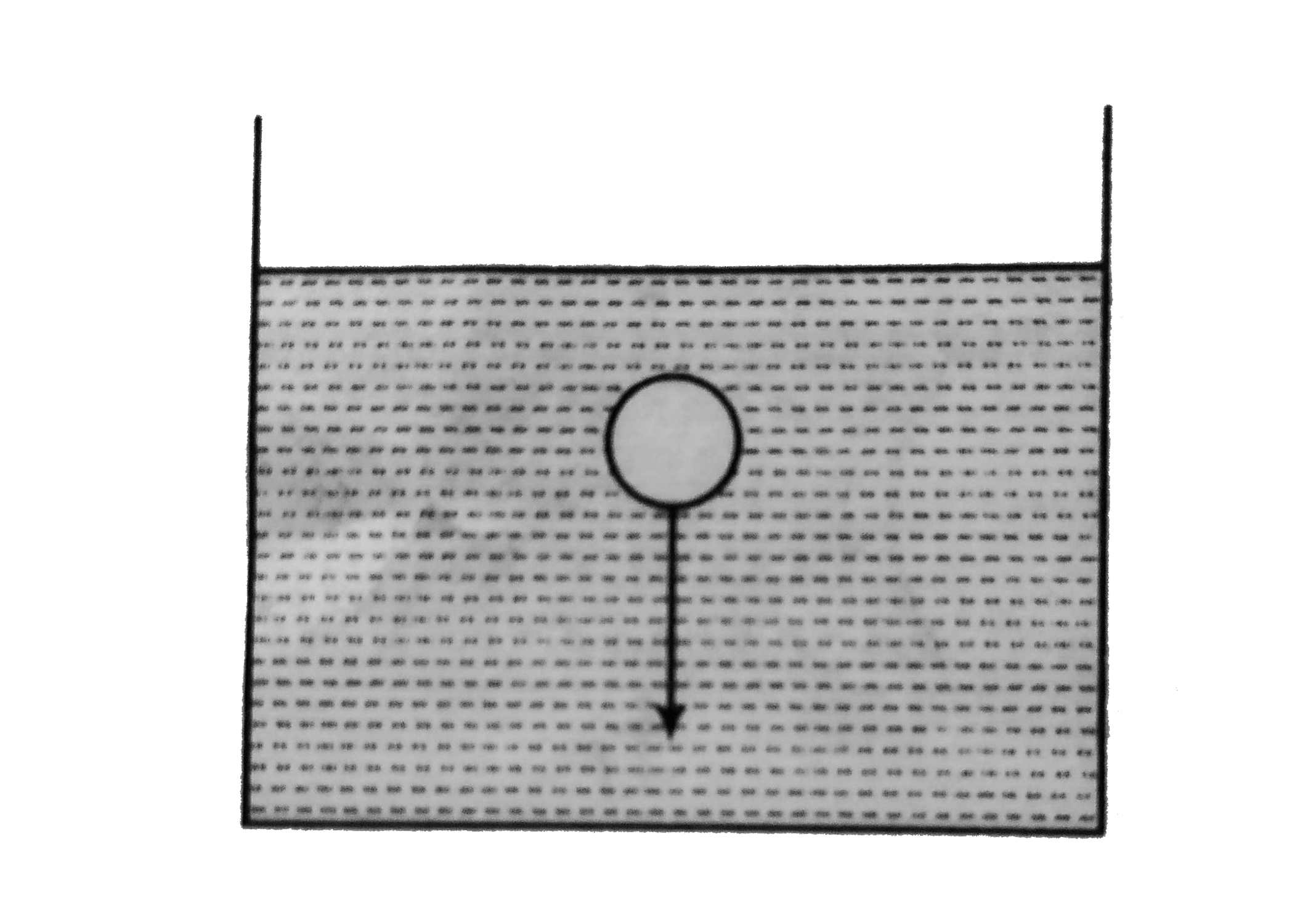A spherical solild of volume V is made of a material of density ρ1. It is falling through a liquid of density ρ2(ρ2<ρ1). Assume that the liquid applies a viscous froce on the ball that is proportional ti the its speed v, i.e., Fviscous=−kv2(k>0). The terminal speed of the ball is
√Vg(ρ1−ρ2)k
Vgρ1k
√Vgρ1k
Vg(ρ1−ρ2)k
The correct Answer is:A
To find the terminal speed of a spherical solid falling through a liquid, we can follow these steps:
Step 1: Identify the forces acting on the sphere
When the sphere is falling, three main forces act on it:
1. The gravitational force (weight) acting downward: Fg=mg
2. The buoyant force acting upward: Fb=Vρ2g
3. The viscous force acting upward, which is proportional to the speed of the sphere: Fviscous=−kv2
Step 2: Write the expressions for the forces
- The mass m of the sphere can be expressed as:
m=Vρ1
- The gravitational force is then:
Fg=Vρ1g
- The buoyant force is:
Fb=Vρ2g
Step 3: Set up the equation for terminal velocity
At terminal velocity, the net force acting on the sphere is zero. Therefore, we can write:
Fg−Fb−Fviscous=0
Substituting the expressions for the forces:
Vρ1g−Vρ2g−kv2=0
Step 4: Rearranging the equation
Rearranging the equation gives:
Vρ1g−Vρ2g=kv2
Factoring out Vg from the left side:
Vg(ρ1−ρ2)=kv2
Step 5: Solve for terminal velocity vt
Now, we can solve for v:
kv2=Vg(ρ1−ρ2)
Dividing both sides by k:
v2=Vg(ρ1−ρ2)k
Taking the square root gives us the terminal velocity:
vt=√Vg(ρ1−ρ2)k
Final Answer
The terminal speed of the ball is:
vt=√Vg(ρ1−ρ2)k
When the sphere is falling, three main forces act on it:
1. The gravitational force (weight) acting downward: Fg=mg
2. The buoyant force acting upward: Fb=Vρ2g
3. The viscous force acting upward, which is proportional to the speed of the sphere: Fviscous=−kv2
- The mass m of the sphere can be expressed as:
m=Vρ1
- The gravitational force is then:
Fg=Vρ1g
- The buoyant force is:
Fb=Vρ2g
At terminal velocity, the net force acting on the sphere is zero. Therefore, we can write:
Fg−Fb−Fviscous=0
Substituting the expressions for the forces:
Vρ1g−Vρ2g−kv2=0
Rearranging the equation gives:
Vρ1g−Vρ2g=kv2
Factoring out Vg from the left side:
Vg(ρ1−ρ2)=kv2
Now, we can solve for v:
kv2=Vg(ρ1−ρ2)
Dividing both sides by k:
v2=Vg(ρ1−ρ2)k
Taking the square root gives us the terminal velocity:
vt=√Vg(ρ1−ρ2)k
The terminal speed of the ball is:
vt=√Vg(ρ1−ρ2)k
Topper's Solved these Questions
Similar Questions
A solid ball of density ρ1 and radius r falls vertically through a liquid of density ρ2. Assume that the viscous force acting on the ball is F=krv, where k is a constant and v its velocity. What is the terminal velocity of the ball ?
View SolutionA ball of density ρ is released from deep inside of a liquid of density 2ρ. It will move up
View Solution
Knowledge Check
A body floats in a liquid A of density ρ1 with a part of it submerged inside liquid while in liquid B of density ρ2 totally submerged inside liquid. The densities ρ1 and ρ2 are related as :
Aρ1=ρ2Bρ1<ρ2Cρ1>ρ2Dnothing can be said
A body weighs W1 in a liquid of density ρ1 and W2 in a liquid of density ρ2. What is the weight of body in a liquid of density ρ3?
View SolutionA ball of density ρ is dropped from a height on the surface of a non-viscous liquid of density 2ρ. Choose the correct options.

View SolutionThe terminal velocity v of a spherical ball of lead of radius R falling through a viscous liquid varies with R such that
View SolutionA ball of volume V and density ρ1 is moved downwards by a distance 'd' in liquid of density ρ2. Find total change in potential energy of the system.

View SolutionA block of material has a density ρ1 and floats three-fourth submerged in a liquid of unknown density. Show tht the density ρ2 of the unknown liquid is given by ρ2=43ρ1.
View SolutionA small ball of density rho_(0) is released from the surface of a liquid whose density varies with depth h as ρ=ρ02(α+βh). Mass of the ball is m. Select the most appropriate one option.
View SolutionA solid sphere having volume V and density ρ floats at the interface of two immiscible liquids of densites ρ1 and ρ2 respectively. If ρ1<ρ<ρ2, then the ratio of volume of the parts of the sphere in upper and lower liquid is
View Solution